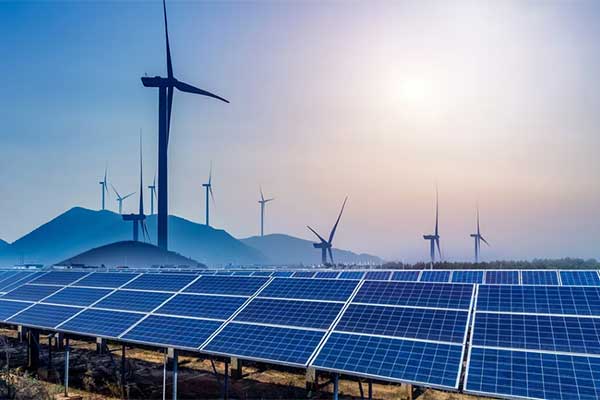- Solar power has pursued the sharpest possible innovation curve in order to drive down prices.
- Wind, hydropower and other renewables must follow the same course – though the climate crisis makes it a matter of even greater urgency.
- Material innovation and cumulative technology improvements are key.
Over the last few decades, solar power has been one of the greatest success stories for the energy industry.
Prices have fallen a staggering amount, making it the cheapest energy source on earth today, and the International Energy Agency (IEA) predicts that solar will be the “king” of renewables growth over the next decade.
This uptake has been driven in part by a “learning by doing” approach, as well as policies in places like the US and China that have helped nurture the market. The primary driver has been a willingness to constantly adapt and improve in order to achieve the sharpest possible innovation curve.
Looking at the rapid energy transition needed to help mitigate the worst effects of climate change, we must now achieve similar success in all other renewable sources. It’s critical that sources such as offshore wind or hydropower storage are also able to decrease cost to the point where fossil fuels are rendered uneconomical. For example, according to the IEA, offshore wind alone has the potential to meet global energy needs 18 times over. Yet today it supplies barely a fraction of the world’s power.
If wind and other renewable sources are going to replace fossil fuels, it’s crucial that momentum is gained towards mirroring solar’s innovation curve, and that lessons are learned about the importance of accelerating the deployment of enabling technologies.
Material innovation
Solar has been at the forefront of material innovation in recent years. In 2009, panels were only able to capture and store around 3% of the available energy from sunlight. Subsequently, research and development moved to silicon cells (which cap out at around 29% efficiency) and, when silicon reached the peak of its innovation curve, on to perovskites (able to break the 40% barrier). Now researchers are looking at ways that perovskites can be boosted to around 66%, thanks to hot carrier devices.
A 22-fold efficiency increase in 11 years is the level of disruptive innovation that wind power needs to aim for, particularly when it comes to the materials and design of turbines. Many turbines already weigh more than jumbo jets, but having such heavy models can be inefficient and slows down the rate at which new wind farms can be deployed. Operators need to embrace disruptive innovation to achieve new lean designs that are lightweight, cheaper to produce, and compatible with the circular economy.
Cumulative benefits
A second key driver of the remarkable price drop for solar has been the broad approach applied to seeking improvements. A study from MIT analyzed which factors have been most decisive in making solar so much cheaper; it found that six “low-level” factors (i.e. ones related to the production of the cells themselves) were each responsible for at least a 10% drop in costs. Factors like upgrading production processes such as the conversion efficiency of photovoltaic cells, or reducing the cost per cell for manufacturing, were responsible for around 70% of savings overall.
Again, it’s essential for other renewables to follow similar paths and make sure that all aspects of system design are optimized with the aim of achieving cumulative benefits from all combined. In wind for example, by developing lighter blades, nacelle-rotor assemblies and foundations, wind-farm operators could improve scalability while unlocking significant cost savings.
Seeing the big picture
There are several key differences between solar power and other sources of renewable energy. Firstly, solar panels can be made at almost any size, while wind and hydroelectricity require large-scale assets that involve a great many interlinking parts. Secondly, and more importantly, we don’t have the luxury of time. Although solar power has seen a remarkable price drop since 2009, we can’t afford to wait another decade to see other renewables to do the same.
Any effort to copy the type of innovation curve solar has seen will rely on enabling technologies that can help sources like offshore wind go from a revolutionary new design prototype to mass production and rollout within a matter of two to three years.
—
This material [article] was written by Thomas Leurent
Chief Executive Officer, Akselos. It was published by the World Economic Forum.













Comments